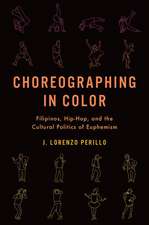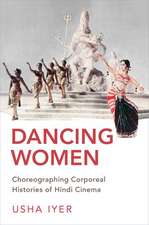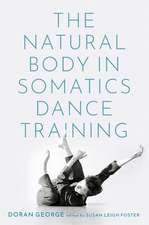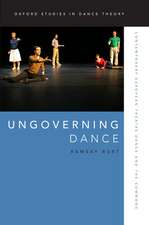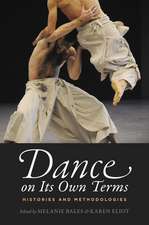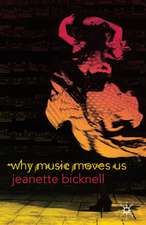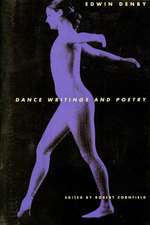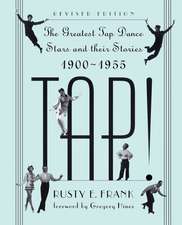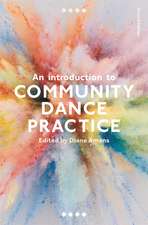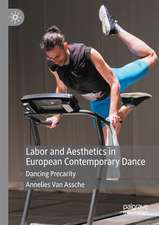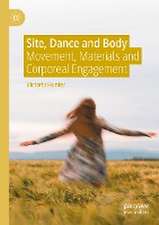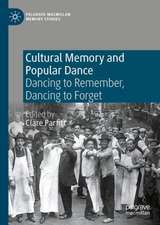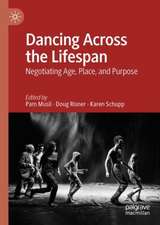Dance and the Alexander Technique
Autor Rebecca Nettl-Fiol, Luc Vanieren Limba Engleză Mixed media product – 16 iun 2011
Preț: 231.82 lei
Nou
Puncte Express: 348
Preț estimativ în valută:
44.36€ • 46.31$ • 36.71£
44.36€ • 46.31$ • 36.71£
Carte disponibilă
Livrare economică 15-29 martie
Livrare express 01-07 martie pentru 31.11 lei
Preluare comenzi: 021 569.72.76
Specificații
ISBN-13: 9780252077937
ISBN-10: 0252077938
Pagini: 216
Ilustrații: 155 black & white photographs
Dimensiuni: 191 x 229 x 20 mm
Greutate: 0.48 kg
Ediția:First Edition
Editura: University of Illinois Press
Colecția University of Illinois Press
ISBN-10: 0252077938
Pagini: 216
Ilustrații: 155 black & white photographs
Dimensiuni: 191 x 229 x 20 mm
Greutate: 0.48 kg
Ediția:First Edition
Editura: University of Illinois Press
Colecția University of Illinois Press
Recenzii
"So few other books offer practical guidance or outline experiential practices that help dancers understand how to apply the Alexander Technique, the art and science of embodied living. Nettl-Fiol and Vanier eloquently and clearly help readers learn how to access their bodily sensations and utilize them to organize efficient, easy, and elegant movement."--Glenna Batson, associate professor of physical therapy at Winston-Salem State University
"An articulate and accessible in-depth synthesis of the Alexander Technique and traditional dance training. With clear, intriguing, and insightful writing, the authors demonstrate a depth of knowledge in somatic practice theory."--Kathryn Daniels, Chair, Dance Department at Cornish College of the Arts, Seattle
“This is a valuable book for the dance industry. While the book contains a considerable wealth of information, the writing is clear and the exercises are easy to follow. It would be possible to use exercises directly from the book or DVD. . . . Dancers will benefit from owning this book, but it will be most valuable in the hands of dance teachers, who can pass on the information through experiential workshop sessions to their students.”—Research in Dance Education
Notă biografică
Rebecca Nettl-Fiol is a professor of dance at the University of Illinois at Urbana-Champaign, a dance choreographer, and the coeditor of The Body Eclectic: Evolving Practices in Dance Training.Luc Vanier is an associate professor in the dance department at the University of Wisconsin-Milwaukee's Peck School of the Arts and a dance choreographer.
Cuprins
Credits ix
Preface xi
Acknowledgments xvii
Part One: Groundwork: Dance, Alexander Technique, and Dart Procedures 1
Introduction to Part One 3
1. Assumptions and Foundations 9
2. Alexander Technique: Overview and Basic Principles 17
3. The Dart Procedures: Overview and Key Concepts 27
Part Two: From Crawling to Leaping: Dart Procedures Applied to Dance Training 41
Introduction to Part Two 43
4. Primary and Secondary Curves: Looking at Movement through a New Lens 45
5. Spirals for Connectivity and Lengthening 57
6. Discovering the Resiliency of the System 71
Part Three: The Right Thing Does Itself- Alexander Principles Applied to Dance Training 83
Introduction to Part Three 85
7. The Whole Self 87
8. Becoming Aware of Habit 95
9. Head First: Facilitating Coordination 103
10. Allowing versus Doing 111
11. Releasing the Catch: Direction 117
Part Four: Applications to Dance Movements 129
Introduction to Part Four 131
12. Applications to Ballet 133
13. Applications to Contemporary Modern Dance Technique 149
14. Applications for Teachers: Correction with Direction 165
Epilogue 177
Bibliography 181
DVD Contents 185
Index 187
Preface xi
Acknowledgments xvii
Part One: Groundwork: Dance, Alexander Technique, and Dart Procedures 1
Introduction to Part One 3
1. Assumptions and Foundations 9
2. Alexander Technique: Overview and Basic Principles 17
3. The Dart Procedures: Overview and Key Concepts 27
Part Two: From Crawling to Leaping: Dart Procedures Applied to Dance Training 41
Introduction to Part Two 43
4. Primary and Secondary Curves: Looking at Movement through a New Lens 45
5. Spirals for Connectivity and Lengthening 57
6. Discovering the Resiliency of the System 71
Part Three: The Right Thing Does Itself- Alexander Principles Applied to Dance Training 83
Introduction to Part Three 85
7. The Whole Self 87
8. Becoming Aware of Habit 95
9. Head First: Facilitating Coordination 103
10. Allowing versus Doing 111
11. Releasing the Catch: Direction 117
Part Four: Applications to Dance Movements 129
Introduction to Part Four 131
12. Applications to Ballet 133
13. Applications to Contemporary Modern Dance Technique 149
14. Applications for Teachers: Correction with Direction 165
Epilogue 177
Bibliography 181
DVD Contents 185
Index 187

